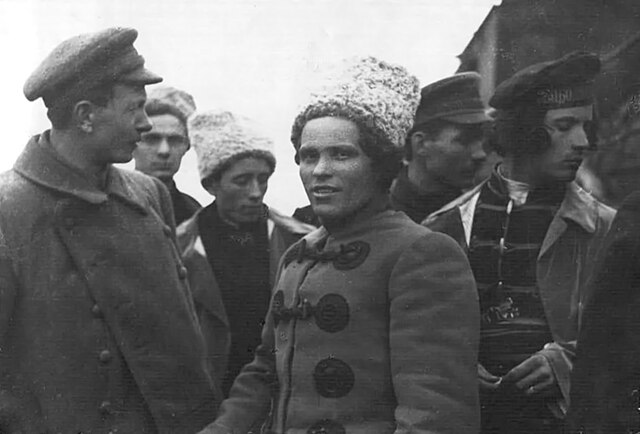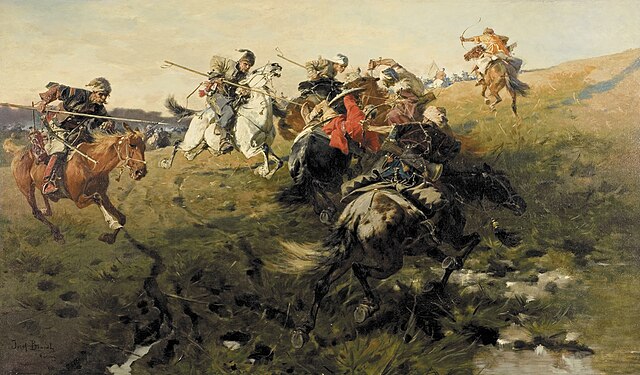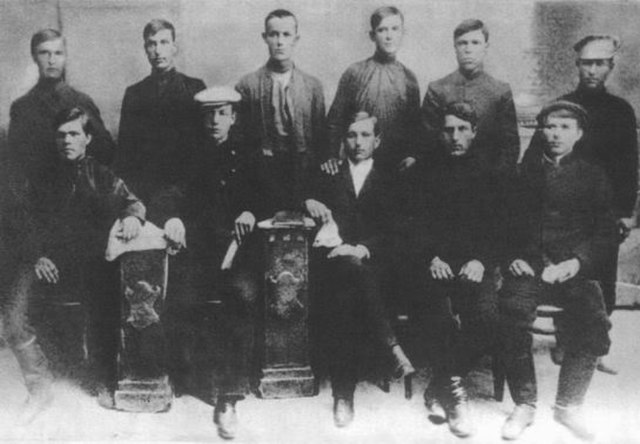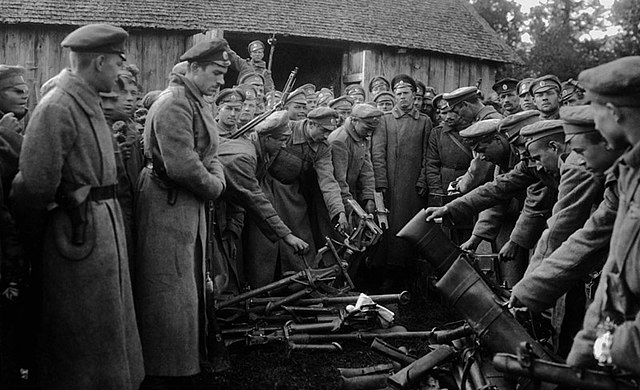Anarchism in Ukraine has its roots in the democratic and egalitarian organization of the Zaporozhian Cossacks, who inhabited the region up until the 18th century. Philosophical anarchism first emerged from the radical movement during the Ukrainian national revival, finding a literary expression in the works of Mykhailo Drahomanov, who was himself inspired by the libertarian socialism of Pierre-Joseph Proudhon. The spread of populist ideas by the Narodniks also lay the groundwork for the adoption of anarchism by Ukraine's working classes, gaining notable circulation in the Jewish communities of the Pale of Settlement.
Commanders of the Revolutionary Insurgent Army of Ukraine, including Semen Karetnyk (3rd from the left), Nestor Makhno (center), and Fedir Shchus (1st from the right)
Zaporozhian Cossacks fighting Tatars of the Crimean Khanate.
Mykhailo Drahomanov, the first Ukrainian philosophical anarchist and one of the leading figures of the democratic federalist movement.
Members of the Union of Poor Peasants, including Nestor Makhno (bottom-left).
The Russian Revolution was a period of political and social change in the Russian Empire, starting in 1917. This period saw Russia abolish its monarchy and adopt a socialist form of government following two successive revolutions and a bloody civil war. The Russian Revolution can also be seen as the precursor for the other European revolutions that occurred during or in the aftermath of World War I, such as the German Revolution of 1918–1919.
Image: Митинг на Невском проспекте (1917)
Image: 19170704 Riot on Nevsky prosp Petrograd
Image: After the capture of the Winter Palace 26 October 1917
Image: Lavr Kornilov troops lay down their arms








